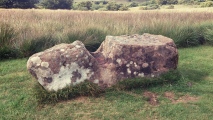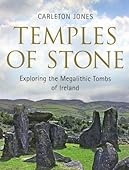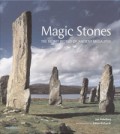<< Text Pages >> Quebrada de Oro - Ancient Village or Settlement in Belize
Submitted by bat400 on Wednesday, 16 November 2011 Page Views: 6719
Multi-periodSite Name: Quebrada de OroCountry: Belize
NOTE: This site is 46.844 km away from the location you searched for.
Type: Ancient Village or Settlement
Latitude: 16.539460N Longitude: 88.8151W
Condition:
| 5 | Perfect |
| 4 | Almost Perfect |
| 3 | Reasonable but with some damage |
| 2 | Ruined but still recognisable as an ancient site |
| 1 | Pretty much destroyed, possibly visible as crop marks |
| 0 | No data. |
| -1 | Completely destroyed |
| 5 | Superb |
| 4 | Good |
| 3 | Ordinary |
| 2 | Not Good |
| 1 | Awful |
| 0 | No data. |
| 5 | Can be driven to, probably with disabled access |
| 4 | Short walk on a footpath |
| 3 | Requiring a bit more of a walk |
| 2 | A long walk |
| 1 | In the middle of nowhere, a nightmare to find |
| 0 | No data. |
| 5 | co-ordinates taken by GPS or official recorded co-ordinates |
| 4 | co-ordinates scaled from a detailed map |
| 3 | co-ordinates scaled from a bad map |
| 2 | co-ordinates of the nearest village |
| 1 | co-ordinates of the nearest town |
| 0 | no data |
Be the first person to rate this site - see the 'Contribute!' box in the right hand menu.
Internal Links:
External Links:
Ancient Settlement in the Toledo district of Belize. Buildings and structures include small pyramids and a ball court. Recent excavations indicate that this town was a small ceremonial center.
Note: Scientists uncover clues to how the Classic Maya sustained their dense population
You may be viewing yesterday's version of this page. To see the most up to date information please register for a free account.
Do not use the above information on other web sites or publications without permission of the contributor.
Click here to see more info for this site
Nearby sites
Click here to view sites on an interactive map of the areaKey: Red: member's photo, Blue: 3rd party photo, Yellow: other image, Green: no photo - please go there and take one, Grey: site destroyed
Download sites to:
KML (Google Earth)
GPX (GPS waypoints)
CSV (Garmin/Navman)
CSV (Excel)
To unlock full downloads you need to sign up as a Contributory Member. Otherwise downloads are limited to 50 sites.
Turn off the page maps and other distractions
Nearby sites listing. In the following links * = Image available
24.3km S 182° Nim Li Punit* Ancient Village or Settlement
32.5km SSW 208° Lubaantun* Ancient Village or Settlement
38.0km SE 143° Ka'k' Naab' saltworks Ancient Mine, Quarry or other Industry
40.8km NW 308° Caracol Ancient Village or Settlement
69.2km NNW 337° Chaa Creek* Ancient Village or Settlement
70.4km NNW 330° Xunantunich* Ancient Village or Settlement
72.9km NNW 338° Cahal Pech Ancient Village or Settlement
80.9km NW 307° Holtun* Ancient Village or Settlement
81.4km NW 324° Naranjo* Ancient Village or Settlement
85.1km WNW 291° Chilonche Ancient Village or Settlement
85.8km NW 314° Yaxha* Ancient Village or Settlement
86.6km N 3° Saturday Creek Ancient Village or Settlement
87.0km NNW 336° El Pilar* Ancient Village or Settlement
94.6km NW 319° Nakum* Ancient Village or Settlement
97.7km N 357° Cara Blanca Natural Stone / Erratic / Other Natural Feature
98.8km NNW 330° Holmul Ancient Village or Settlement
102.3km NNW 333° Cival Ancient Village or Settlement
104.5km WNW 298° Ixlú Ancient Village or Settlement
115.3km NW 311° Tikal* Ancient Village or Settlement
121.3km NNW 334° Xultun Ancient Village or Settlement
122.6km WNW 291° Nojpetén* Ancient Village or Settlement
127.5km WNW 291° Nixtun-Ch'ich' Ancient Village or Settlement
128.5km NNW 331° San Bartolo* Ancient Village or Settlement
128.9km NW 318° Uaxactun* Ancient Village or Settlement
132.9km W 269° Ceibal* Ancient Village or Settlement
View more nearby sites and additional images






 We would like to know more about this location. Please feel free to add a brief description and any relevant information in your own language.
We would like to know more about this location. Please feel free to add a brief description and any relevant information in your own language. Wir möchten mehr über diese Stätte erfahren. Bitte zögern Sie nicht, eine kurze Beschreibung und relevante Informationen in Deutsch hinzuzufügen.
Wir möchten mehr über diese Stätte erfahren. Bitte zögern Sie nicht, eine kurze Beschreibung und relevante Informationen in Deutsch hinzuzufügen. Nous aimerions en savoir encore un peu sur les lieux. S'il vous plaît n'hesitez pas à ajouter une courte description et tous les renseignements pertinents dans votre propre langue.
Nous aimerions en savoir encore un peu sur les lieux. S'il vous plaît n'hesitez pas à ajouter une courte description et tous les renseignements pertinents dans votre propre langue. Quisieramos informarnos un poco más de las lugares. No dude en añadir una breve descripción y otros datos relevantes en su propio idioma.
Quisieramos informarnos un poco más de las lugares. No dude en añadir una breve descripción y otros datos relevantes en su propio idioma.